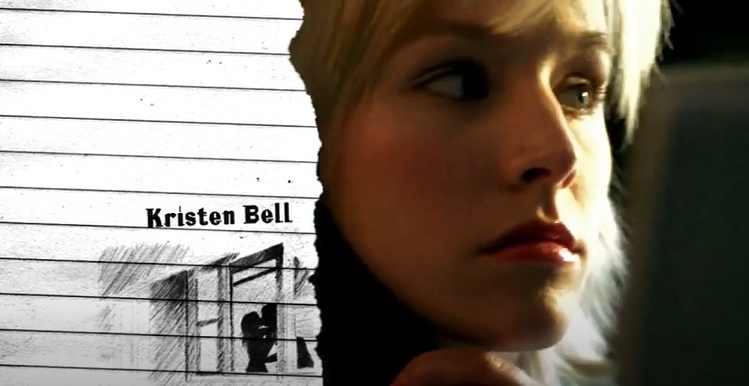We Used to Be Friends
An Introduction to Volume Two: Veronica Mars
Originally published on Letterdrop 9/9/2021
[This post contains discussion of sexual assault.]
How was your summer? I spent mine with Veronica Mars, still sweeping the last traces of Gossip Girl from my mind. (Hmm, I wondered, did Veronica set the precedent for the Nate/Chuck/Blair love triangle? Oh look, Leighton Meester is guest starring!) I felt a little strange jumping back in time, to three years before Gossip Girl premiered: I first watched Veronica in middle school, after my cousin’s wife (thanks, Jess!) gifted me the first season on DVD. I bought the second and third seasons as they became available, watched and rewatched all the episodes. Two of my college roommates (hi, Shannon and Laura!) were equally obsessed with the show, and we went to a midnight showing of the movie at the Lincoln Square AMC; I later watched it a second time with another friend and fan, Maddy. The fourth season . . . well, let’s just say it was enough to watch it once.
A couple years ago, I even played the first season for my partner, Daniel—he enjoyed it but tapped out a few episodes into season two (thoroughly, and justifiably, icked out by the Logan/Kendall plotline).
I suppose the common theme to my Veronica viewing experiences is the reverent sharing of the show: “You love Veronica Mars, too?” “You haven’t seen Veronica Mars? You’d love it!” I can’t speak for every fan, but it meant a lot for me, at thirteen, to see a teenage girl who was smart and took no shit, who was unapologetically bent on seeking justice, even revenge, for herself and her loved ones.
For those who haven’t watched, the pilot opens on the school year after Veronica’s best friend, Lilly Kane, is murdered. Veronica’s father—Keith Mars, then the county sheriff—believes Lilly’s father—Jake Kane, the wealthy founder of Kane Software—is somehow involved in the murder. Keith loses his job and his marriage, and Veronica loses her rich “09er” friends and her boyfriend, Duncan Kane. At an 09er party, she’s drugged and raped.
Now a junior, Veronica solves episodic mysteries through her father’s detective agency, Mars Investigations, while trying to find Lilly’s real killer and her own rapist. She makes friends and allies—Wallace Fennel, the new kid in Neptune and a rising basketball star; Cindy “Mac” Mackenzie, a computer whiz; and Eli “Weevil” Navarro, the head of a local biker gang, the PCHers. And of course, she’s torn between a “good” and a “bad” boy: Duncan and his best friend, Logan Echolls.
In season two, Veronica solves another season-long mystery: Who is responsible for the bus crash that killed five classmates and one teacher? In season three, she attends Hearst College and solves a couple shorter mysteries (a narrative choice that, in my opinion, can’t match the drive of the first two seasons).
As I rewatched the series, I was struck by how progressive the show can be—in its explorations of economic inequality, police violence and corruption, and sex crimes like revenge porn—while also being very much of its time. (The original three seasons aired from 2004 to 2007.) When self-declared feminists do appear on the show, they are usually man-hating extremists (take, for example, the female students who fake a rape to frame a fraternity in season three), and so Veronica often ends up being the special one, the objective one, the not-like-the-other-girls girl, the feminist who still loves men, don’t worry!! (I’ll talk about this more in a later issue.) The show’s central characters of color—Wallace, Weevil, and Jackie Cook, especially—are well-developed but not always given the screen time and story lines they deserve. (Though the show acknowledges Veronica’s self-centeredness in her friendship with Wallace, it never quite recognizes that many of the favors Veronica asks of Wallace are putting his Black male body at risk.) And queer characters? Well, they’re lucky to get a mystery of the week.
From the season one opening credits
But, Chrisinda, you may being asking, how is this a teen soap? Isn’t it a detective show? A mystery? A noir? No, I think Veronica Mars was sold as a teen show, at least for the first two seasons. Take its opening credits, the lined paper and doodles of the title cards, the first words of the theme song—this is a high school show with a very teenage heart: “A long time ago, we used to be friends / But I haven’t thought of you lately at all.” It’s only once Veronica goes to the college that the credits turn more mature, more noir, the theme song remixed. As for the soap—well, I’d argue that there are as many OMG moments as there were on Gossip Girl (potential incest, questionable paternity, switched-at-birth babies, and that’s just the first season!).
From the season three opening credits
And yes, there are the costumes, very much rooted in the mid-aughts teenage aesthetic, in American Eagle polos and boot-cut jeans and puka-shell necklaces. Like Gossip Girl’s Eric Daman, Veronica’s Salvador Perez understands the importance of clothing as identity, of dressing like your friends—or unlike your former friends. Perez (who later did excellent work on The Mindy Project) shaped the look of the series; as he told MTV News: “the way Veronica dressed was never discussed in any dialogue, in any script, it was completely my concept.” (Perez is now president of the Costume Designers Guild and an advocate for costume designers getting fairly compensated and credited for their work. Solidarity forever!)
In my rewatch, I realized that my observations about the costume design fell into five categories: flashbacks, doppelgängers and foils, uniforms, dreams and fantasies, and disguises. And so, for this volume, I’ll be structuring my posts around those five themes, with my first essay, on flashbacks, coming Thursday, 9/23.

